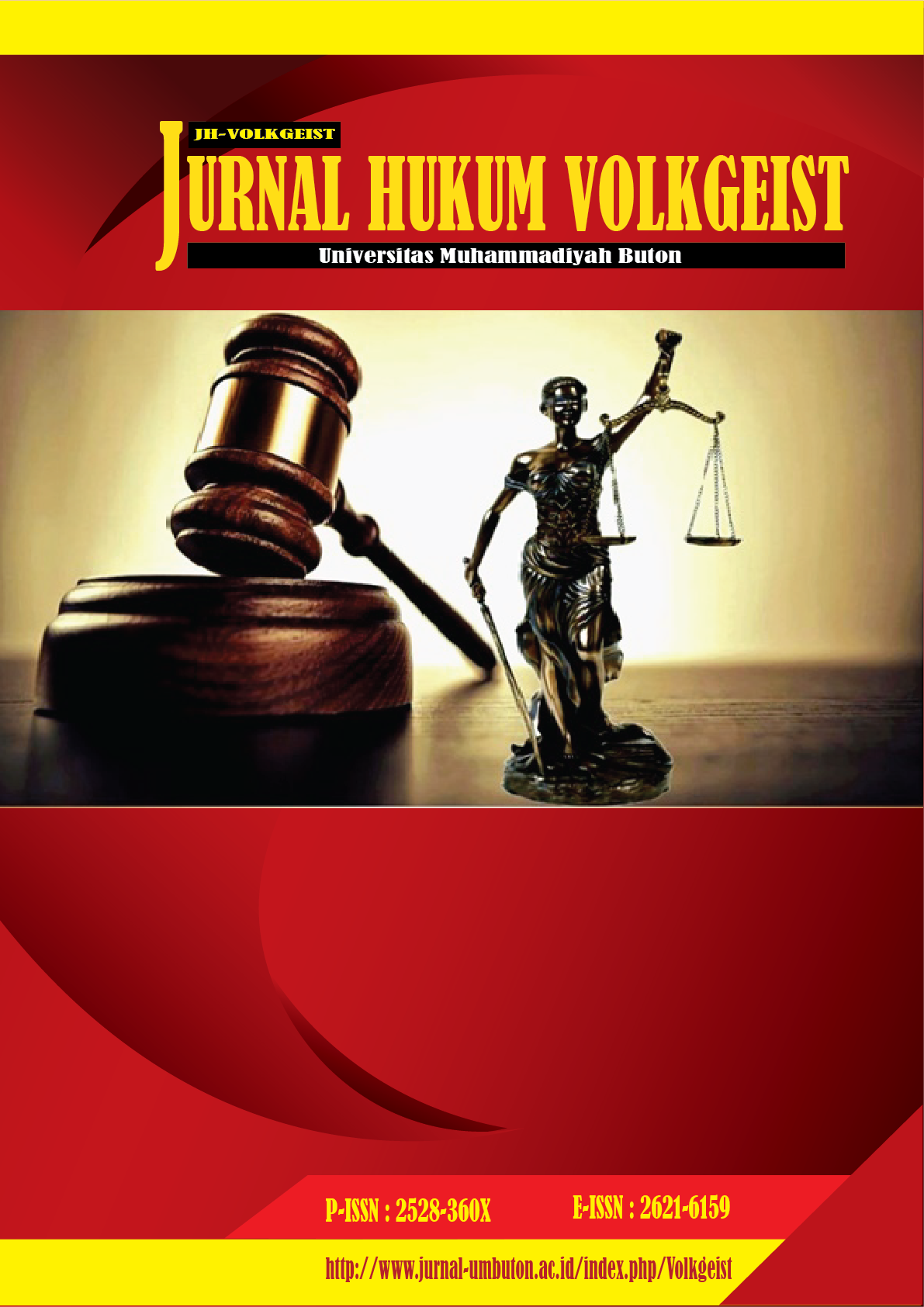Optimizing The Role of Religious Jurisdiction in Preventing Child Marriage in Gorontalo Province
DOI:
https://doi.org/10.35326/volkgeist.v7i1.2866Keywords:
Child Marriage, Optimization, Prevention, Religious CourtsAbstract
The prevalence of child marriage under 18 years released by the Central Bureau of Statistics in 2020 places Gorontalo Province in the 6th highest place in Indonesia with a rate of 23.16%. The data is corroborated by the records of the Supreme Court who receive cases of requests for dispensation from marriage which each year has increased. the religious court's allusion to child marriage through a marriage dispensation mechanism. A quo mechanism is regulated in Supreme Court Regulation (PERMA) Number 5 of 2019 concerning Guidelines for Trialing Applications for Dispensation of Marriage. Various factors behind the request for underage marriage include: because they really want to get married, because they are pregnant out of wedlock and there are applications for girls whose age has not been justified by law. On the basis of these problems, this study aims to provide space for the religious court as the final determinant through legal considerations and its sociological aspects, prioritizing prevention efforts by narrowing the space for applications, examining cases more carefully, and the commitment of the parties to respond to the negative consequences of child marriage. The research method used is the legal behavior approach that occurs in society (socio legal research).
Downloads
References
Ahyani, S. (2016). Pertimbangan Pengadilan Agama Atas Dispensasi Pernikahan Usia Dini Akibat Kehamilan Di Luar Nikah. Jurnal Wawasan Yuridika, 4(31).
Anjarwati. (2017). Increasing the minimum age of marriage program to improve maternal and child health in Indonesia. https://aip.scitation.org/doi/pdf/10.1063/1.4995195
BPS. (2018). Data perkawinan anak dari Survei Sosial Ekonomi Nasional (SUSENAS).
Fadlyana, E., & Larasaty, S. (2016). Pernikahan usia dini dan permasalahannya. Sari Pediatri, 11(2).
Lahaling, H., Lasori, S. A., Makkulawuzar, K., Yunus, Y., & Salam, S. (2022). Children's Rights In The Context Of Child Marriage In Gorontalo Province. SASI, 28(2), 234-243.
Mansari, & Rizkal. (2021). Peranan Hakim dalam Upaya Pencegahan Perkawinan Anak: Antara Kemaslahatandan Kemudharatan. El-USRAH: Jurnal Hukum Keluarga, 4(2).
Musthofa, & Dzul Farhan, A. T. (2021). Dispensasi Kawin dan Kepentingan Terbaik Bagi Anak. Badilag Mahkamah Agung. https://badilag.mahkamahagung.go.id/artikel/publikasi/artikel/dispensasi-kawin-dan-kepentingan-terbaik-bagi-anak-oleh-musthofa-s-h-i-m-h-dan-ahmad-taujan-dzul-farhan-s-h-4-2
Puskapa. (2020). Pencegahan Perkawinan Anak : Percepatan yang Tidak Bisa Ditunda. Universitas Indonesia.
Qamar, N., Aswari, A., Djanggih, A., Syarif, M., Busthami, D., Hidjaz, K., & Rezah, F. S. (2017). Metode Penelitian Hukum. CV. Social Politic Genius (SIGn).
UNICEF, BPS, Bappenas, & Puskapa. (2020). Pencegahan Perkawinan Anak:Percepatan yang Tidak Bisa Ditunda. Kementerian Perencanaan Pembangunan Nasional (PPN)/Bappenas.
Wodon, Q. (2016). Early Childhood Development in the Context of the Family: The Case of Child Marriage. Journal of Human Development and Capabilities, 17(4).
Downloads
Submitted
Accepted
Published
Issue
Section
License
- Author retains the copyright and grants Jurnal Hukum Volkgeist the right of first publication of the work simultaneously licensed under the Creative Commons Attribution-ShareAlike 4.0 License that allows others to share the work with an acknowledgment of the work's authorship and initial publication in this journal
- The author is able to enter into separate, additional contractual arrangements for the non-exclusive distribution of the journal's published version of the work (e.g., post it to an institutional repository or publish it in a book) with the acknowledgment of its initial publication in this journal.
- The author is permitted and encouraged to post his/her work online (e.g., in institutional repositories or on their website) prior to and during the submission process, as it can lead to productive exchanges, as well as earlier and greater citation of the published work (See The Effect of Open Access).









.png)































